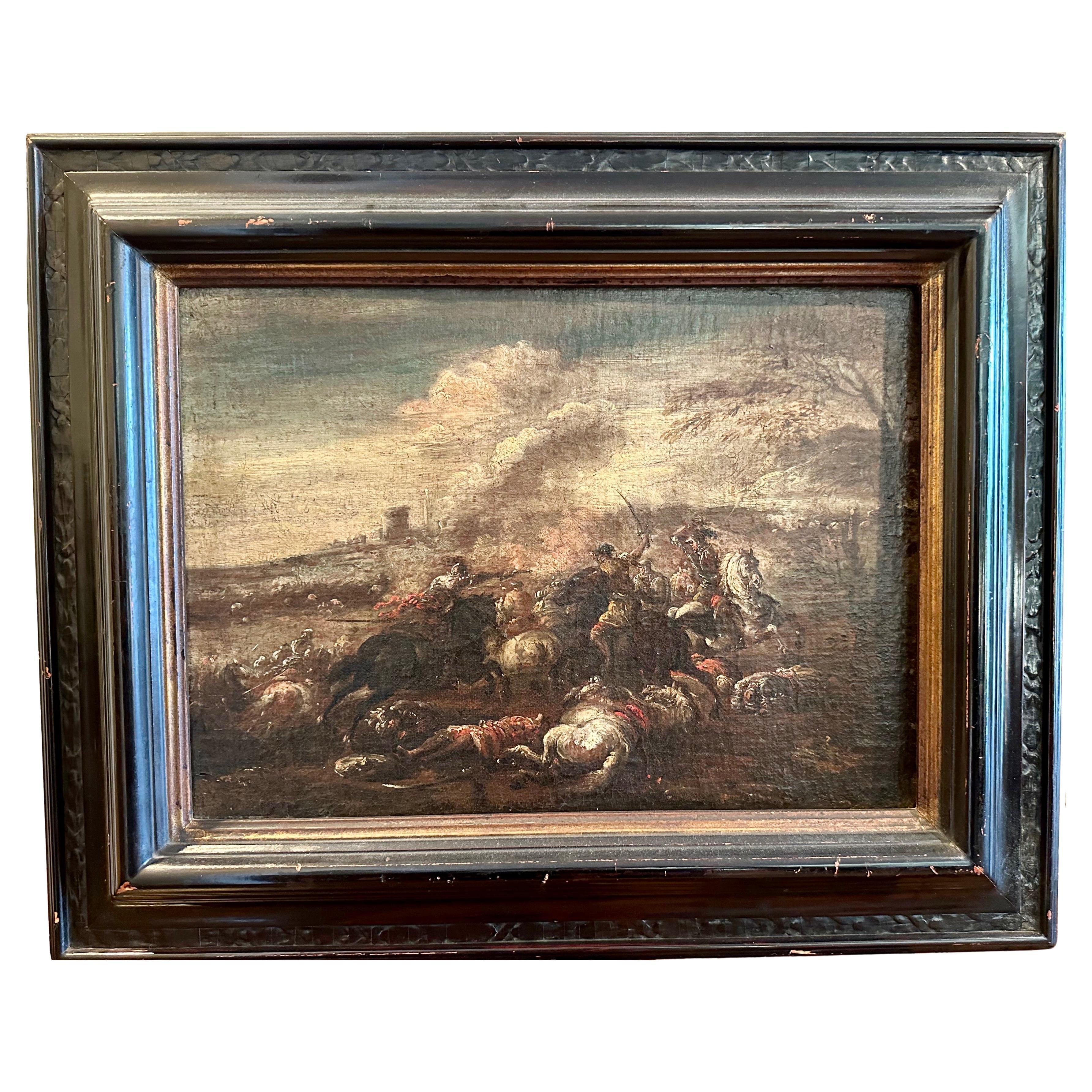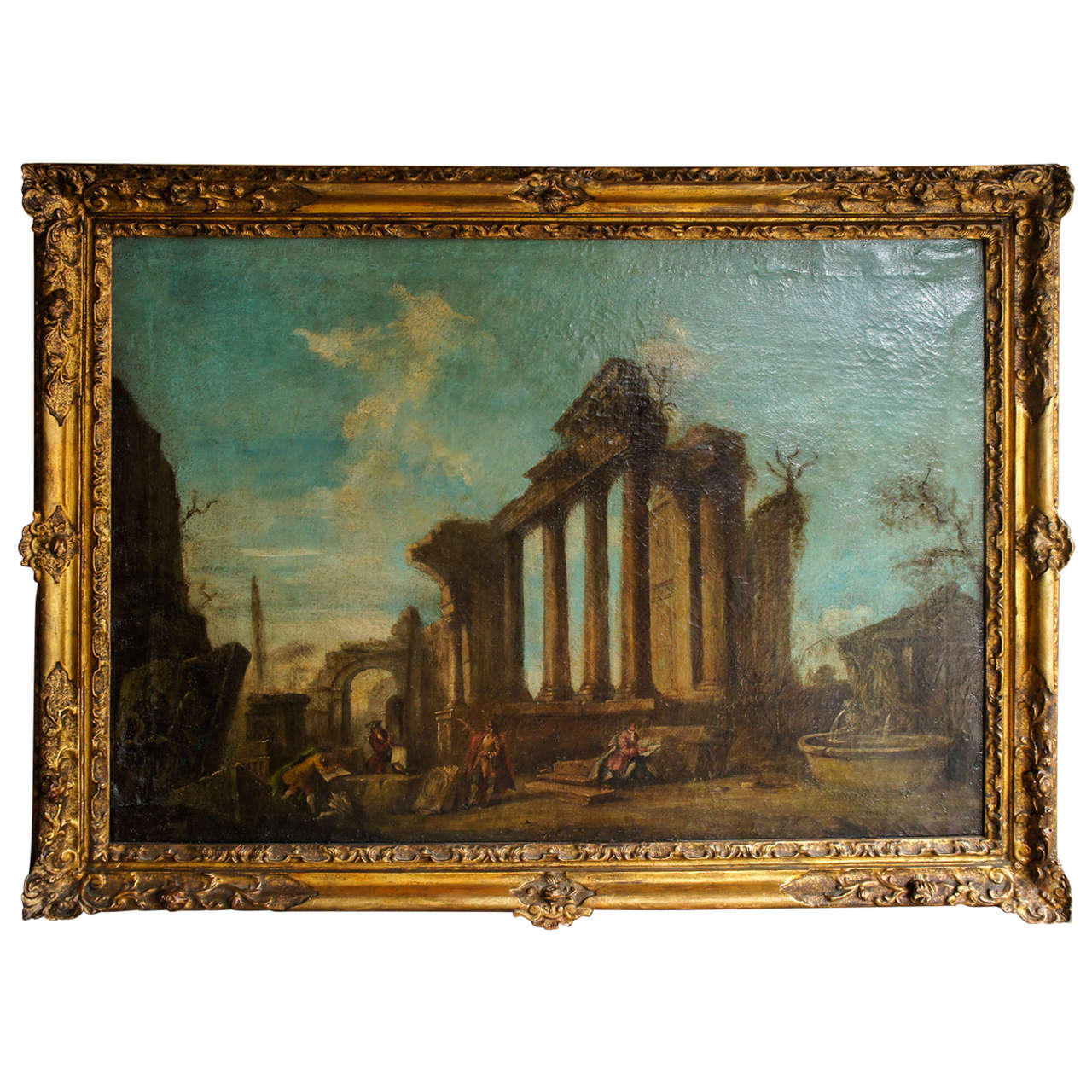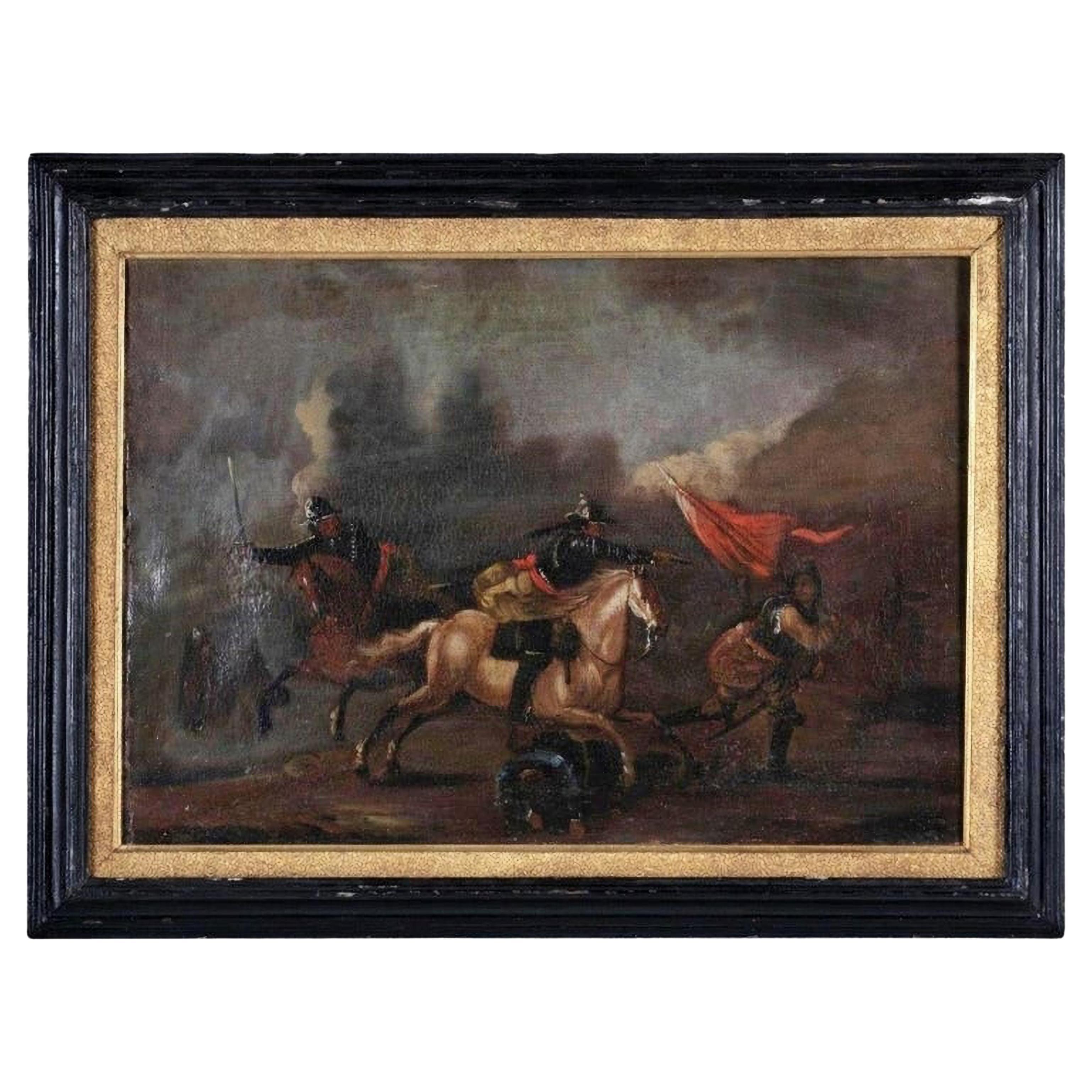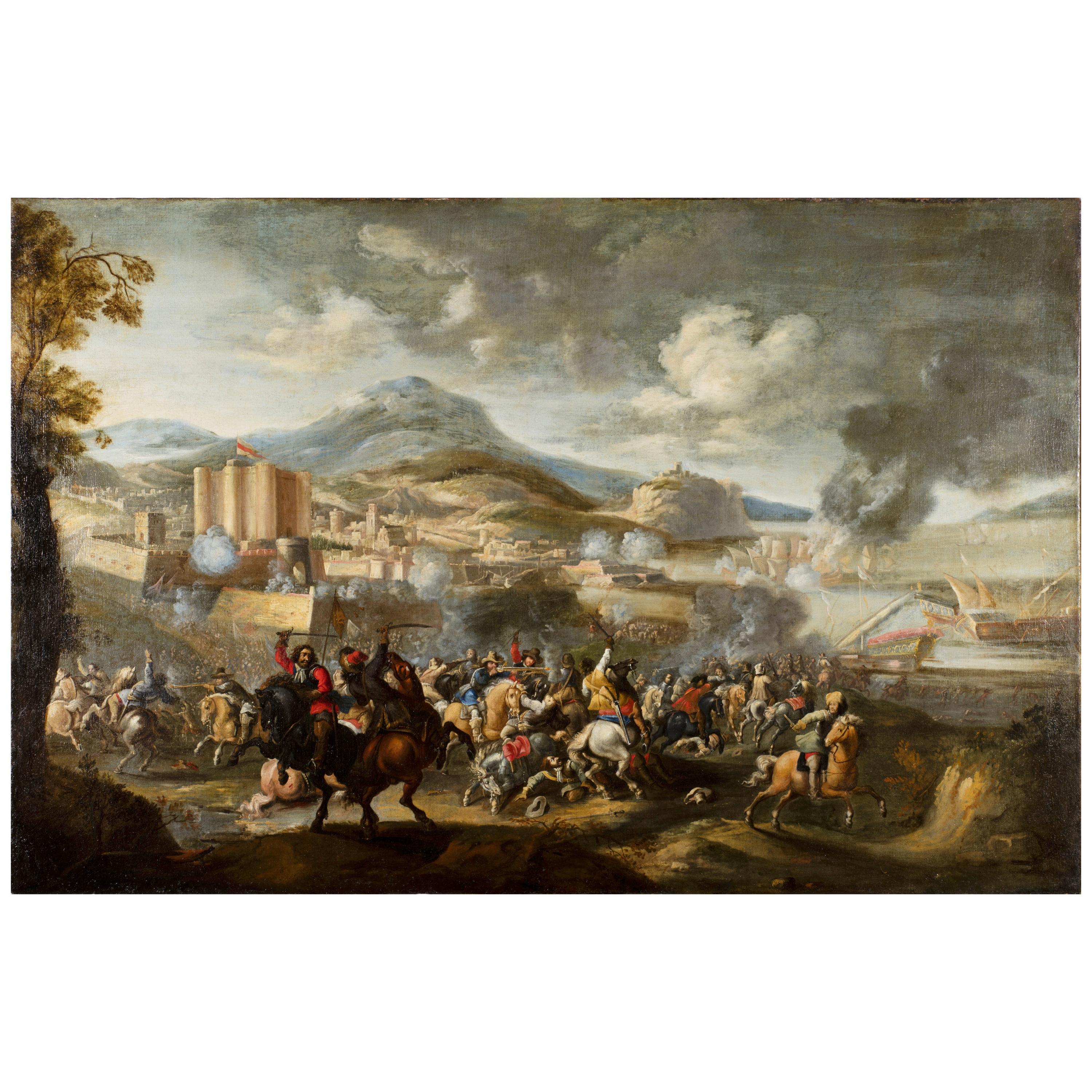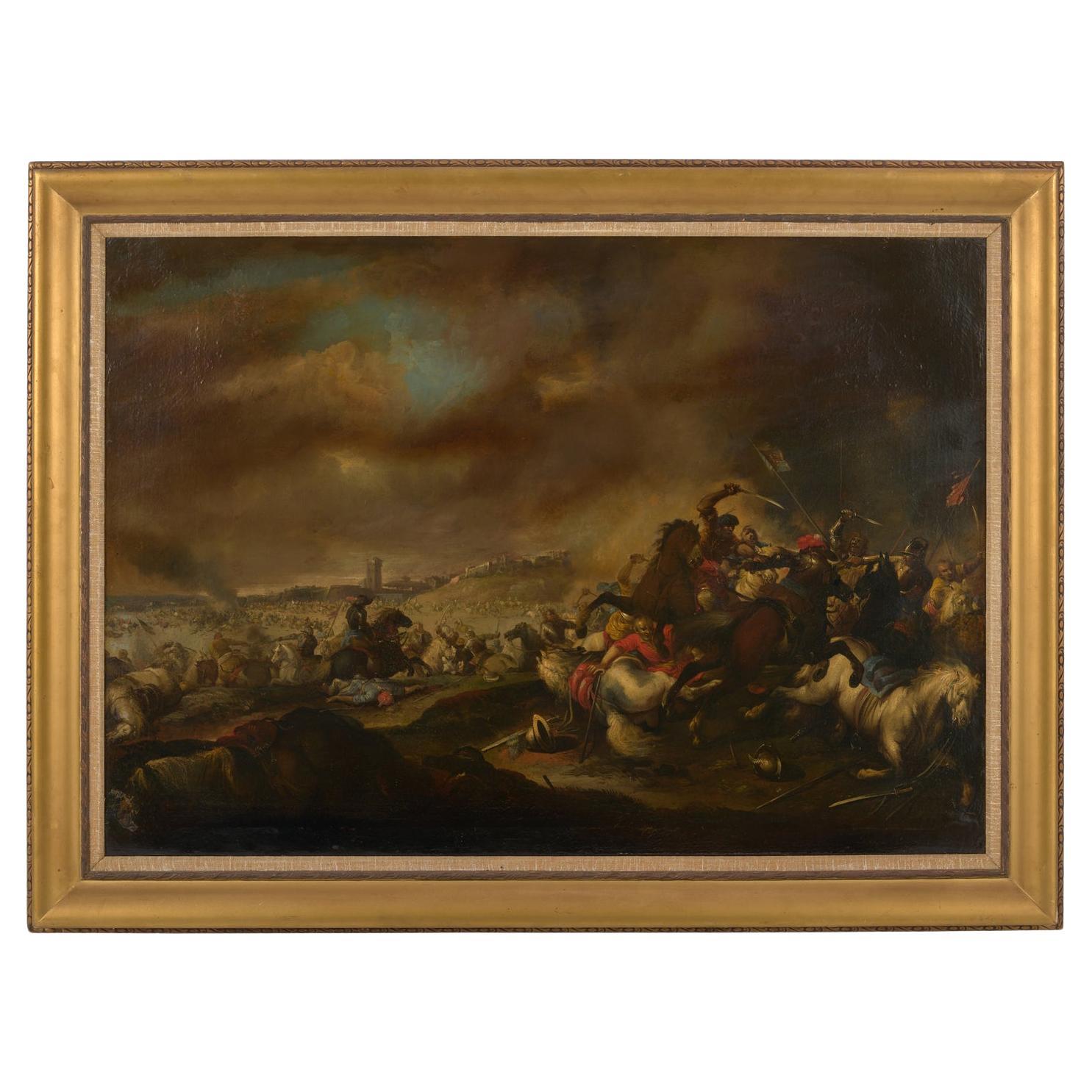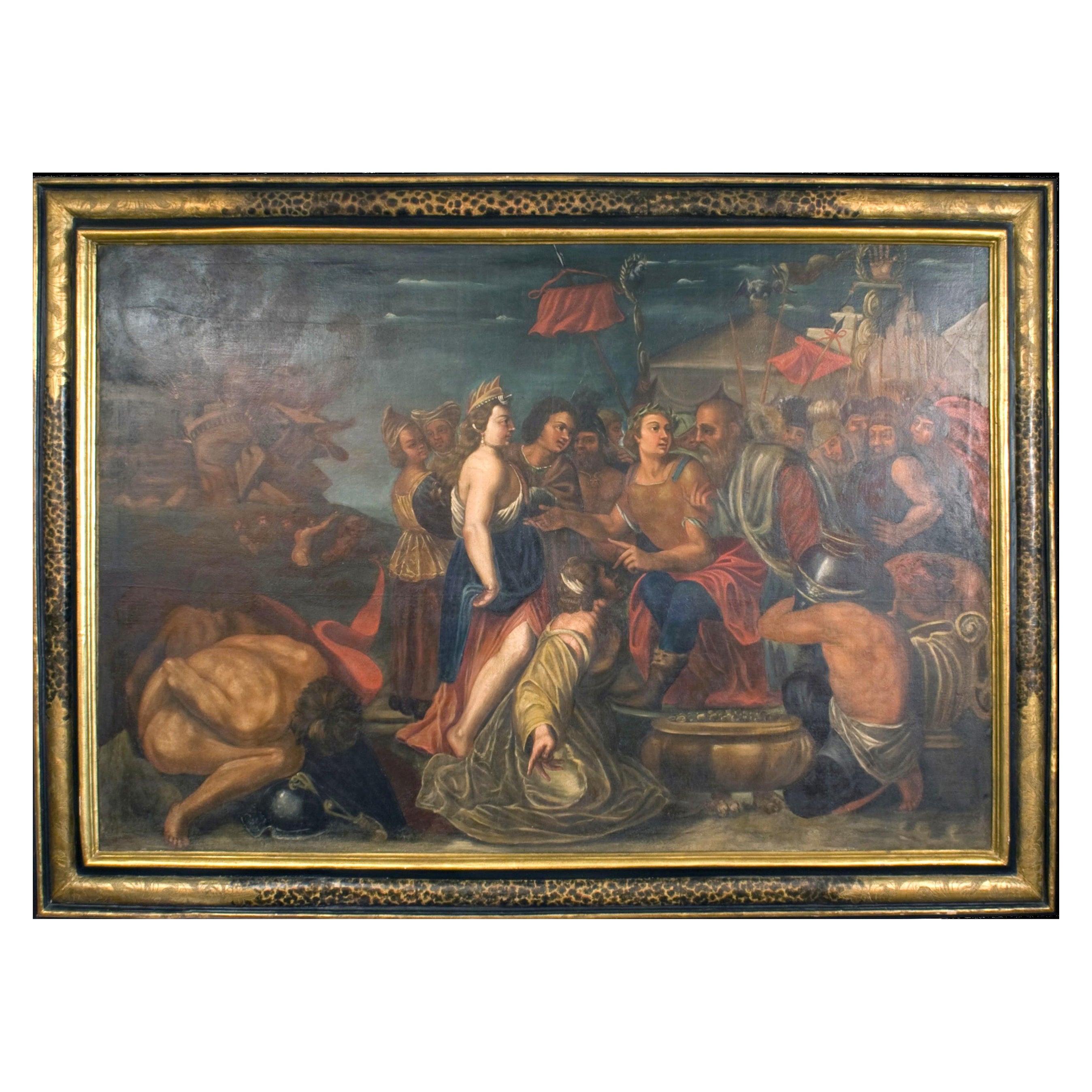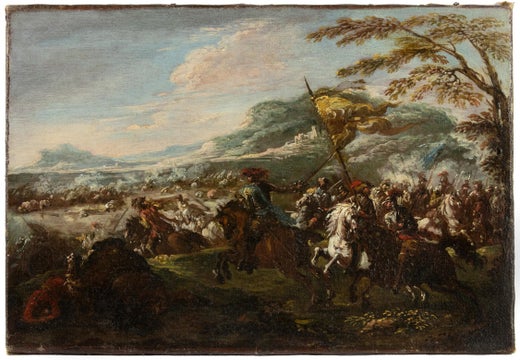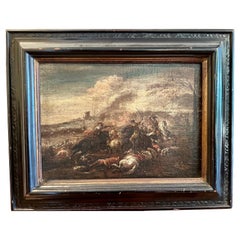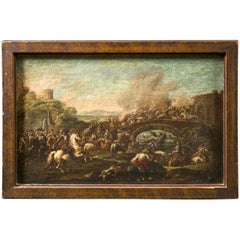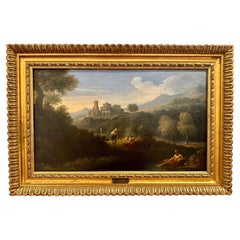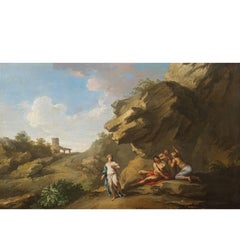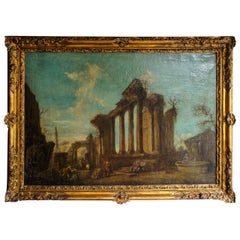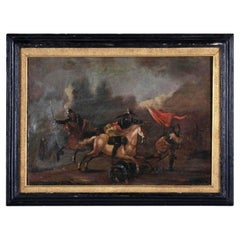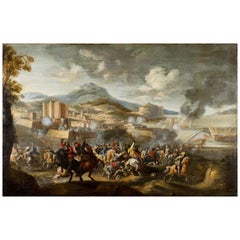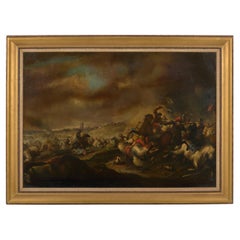Items Similar to Francesco Graziani, Called Ciccio Napoletano, 17th Century
Want more images or videos?
Request additional images or videos from the seller
1 of 10
Francesco Graziani, Called Ciccio Napoletano, 17th Century
$3,800
£2,886.41
€3,326.12
CA$5,351.34
A$5,932.75
CHF 3,117.89
MX$72,607.17
NOK 38,939.32
SEK 36,548.44
DKK 24,827.45
About the Item
Francesco Graziani, Called Ciccio Napoletano, 17th Century
He was active in Naples and Rome around the second half of the 17th Century.
- Creator:Francesco Graziani (Artist)
- Dimensions:Height: 7 in (17.78 cm)Width: 9 in (22.86 cm)Depth: 1 in (2.54 cm)
- Style:Baroque (Of the Period)
- Materials and Techniques:
- Place of Origin:
- Period:Late 17th Century
- Date of Manufacture:circa 1670
- Condition:Wear consistent with age and use.
- Seller Location:CH
- Reference Number:1stDibs: LU977814694562
Francesco Graziani
Francesco Graziani was best known as "Ciccio Napoletano" and “Napoletan Ciccio” and was always associated with military art.
About the Seller
5.0
Recognized Seller
These prestigious sellers are industry leaders and represent the highest echelon for item quality and design.
1stDibs seller since 2013
42 sales on 1stDibs
Typical response time: <1 hour
- ShippingRetrieving quote...Shipping from: Bissone, Switzerland
- Return Policy
Authenticity Guarantee
In the unlikely event there’s an issue with an item’s authenticity, contact us within 1 year for a full refund. DetailsMoney-Back Guarantee
If your item is not as described, is damaged in transit, or does not arrive, contact us within 7 days for a full refund. Details24-Hour Cancellation
You have a 24-hour grace period in which to reconsider your purchase, with no questions asked.Vetted Professional Sellers
Our world-class sellers must adhere to strict standards for service and quality, maintaining the integrity of our listings.Price-Match Guarantee
If you find that a seller listed the same item for a lower price elsewhere, we’ll match it.Trusted Global Delivery
Our best-in-class carrier network provides specialized shipping options worldwide, including custom delivery.More From This Seller
View AllItalian Francesco or Pietro Graziani Neapolitan battle scene, 17th/18th Century
Located in CH
Italian Francesco or Pietro Graziani Neapolitan battle scene, 17th/18th Century
This battle scene is attributable to one of the two Graziani ( Francesco or Pietro) battle scene pain...
Category
Antique Late 17th Century Italian Baroque Paintings
Materials
Canvas
Francesco Graziani, Italian Oil on Canvas "Battle Scene on a Bridge"
Located in CH
A late 17th century Italian oil on canvas of a battle scene on a bridge by Francesco Graziani called Ciccio Napoletano (active in Naples late 17th/18th century).
Measurements are ...
Category
Antique Late 17th Century Italian Baroque Paintings
Materials
Canvas
Jan Frans van Bloemen called Orizzonte (Antwerp 1662-Rome 1749), Roman Landscape
Located in CH
Jan Frans van Bloemen called Orizzonte (Antwerp 1662-Rome 1749).
A Late 17th early 18th century Italian landscape with figures of the Roman Campagna.
...
Category
Antique Late 17th Century Dutch Baroque Paintings
Materials
Canvas
Andrea Locatelli, Italian/Roman Landscape Painting with Figures, 18th Century
Located in CH
A Roman landscape oil on canvas painting with figures by Andrea Locatelli (Roma 1693-1741)
Locatelli was amongst the group of landscape painters in R...
Category
Antique Early 18th Century Italian Rococo Paintings
Materials
Canvas
Southern Italian view of a town, Attrib. to Salvatore Balsamo, 19th/20th Cent.
Located in CH
Southern Italian view of a town, Attributed to Salvatore Balsamo (Napoli, 1894 – Napoli, 1922), 19th/20th Cent.
Salvatore Balsamo was an Italian painter of the late 19th and early ...
Category
Early 20th Century Italian Belle Époque Paintings
Materials
Paint
Late 18th Early-19th Century French Drawing View of Rome
Located in CH
A late 18th-early 19th century French neoclassical drawing on paper, view of the Tiber River with the Aventine hill in Rome.
Category
Antique 19th Century French Neoclassical Drawings
Materials
Paper
You May Also Like
19th Century Italian Oil Painting in the Manner of Antonio Panini
Located in Hudson, NY
This fine old painting is a typical pastiche of the kind popular throughout Italy and the world in the 17th, 18th and 19th centuries. The most commonly associated artist who really m...
Category
Antique 19th Century Italian Baroque Revival Paintings
Materials
Canvas, Wood
French School 18th Century "Battle"
By France"
Located in Madrid, ES
French achool 18th century "Battle".
46cm x 67cm.
Oil on canvas.
Good condition.
Category
Antique Early 18th Century French Baroque Paintings
Materials
Paint
17th Century, Italian Painting with Battle attributed to Marzio Masturzo
Located in IT
Marzio Masturzo, attributed (Active in Italy - in Naples and Rome- in the second half of the 17th century)
"Battle between cavalry and vessels with fortified city on the left"
...
Category
Antique Late 17th Century Italian Baroque Paintings
Materials
Canvas
$40,116 Sale Price
25% Off
A Late 17th Century Painting Depicting A Cavalry Battle
Located in ARMADALE, VIC
A Late 17th Century Painting Depicting A Cavalry Battle
Height: 115 cm Width: 75 cm Depth: 6 cm.
Provenance: Private Australian Collection.
Category
Antique Late 17th Century Italian Baroque Paintings
Materials
Canvas
Large historical painting 18th century, Italian school
Located in Cesena, FC
Large historical painting 18th century, Italian school
"Darius' mother pleading before Alexander after the battle of Issus."
Oil on canvas 210 x 290 cm
Painted with great strength...
Category
Antique Late 18th Century Italian Paintings
Materials
Canvas, Wood, Giltwood
17th Century, Italian Painting with Battle Between Christian and Turkish Cavalry
Located in IT
17th century, Italian oil on canvas painting with battle between Christian and Turkish cavalry
The oil on canvas painting depicts a battle between Christian and Turkish cavalry. C...
Category
Antique Mid-17th Century European Baroque Paintings
Materials
Canvas
More Ways To Browse
Jaime Parlade
China Trade Watercolours
Cy Twombly Furniture
Diego Rivera Signed
Porcelain Signs Oil
Tokyo Pop Furniture
Byron Galvez
Frederick Edward
Mark Levin
Mayflower Furniture
Vintage Wooden Soldier
Chinoiserie Oil Painting
Cusco School
Large Kpm Plaques
Lee Reynolds Canvas
20 X 24 Gold Frame
B P John Furniture
English Fox Hunt
